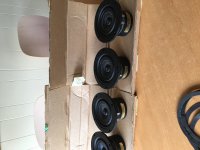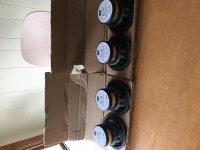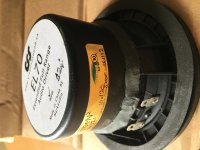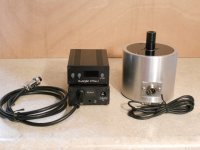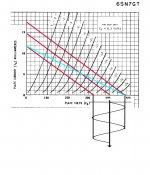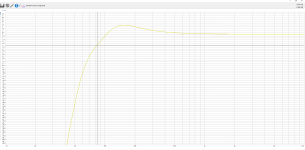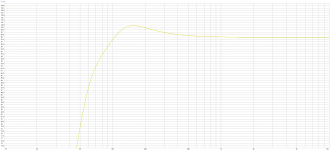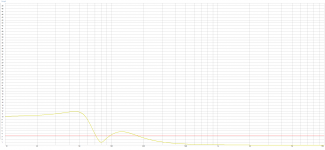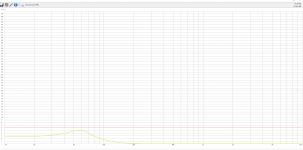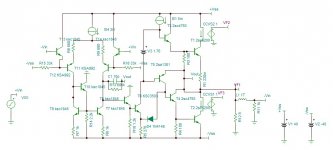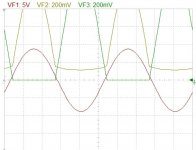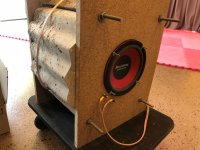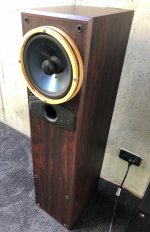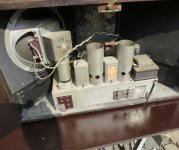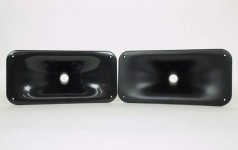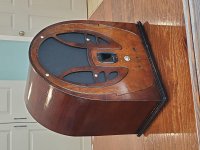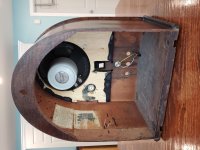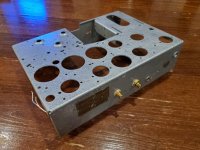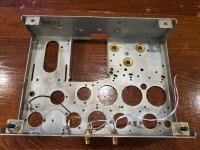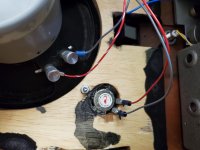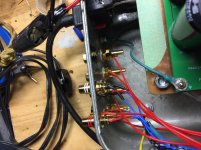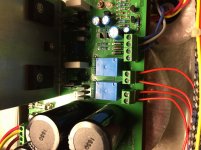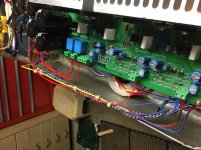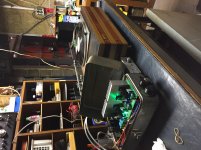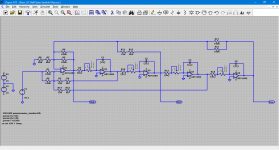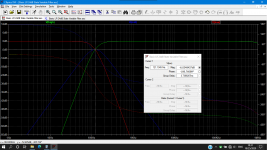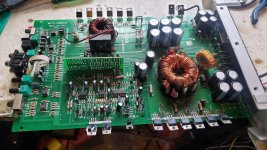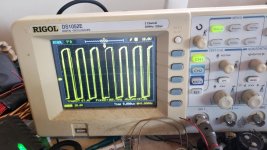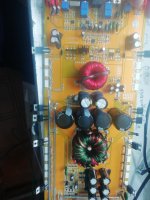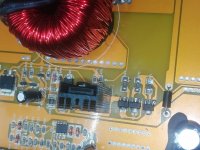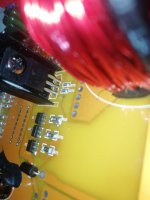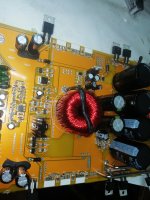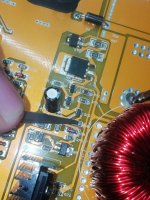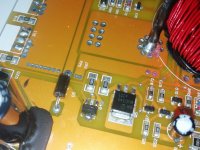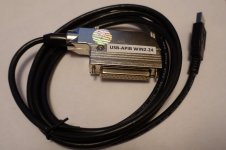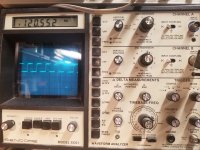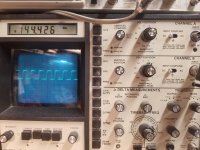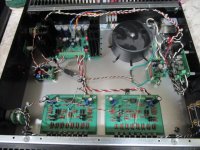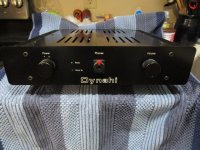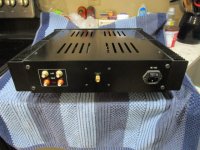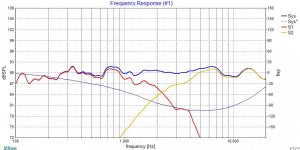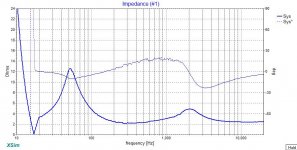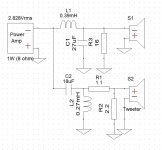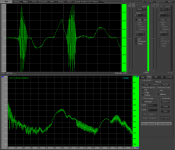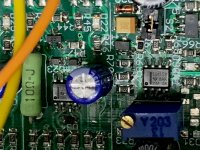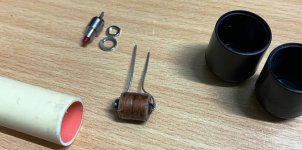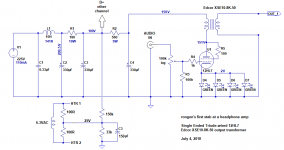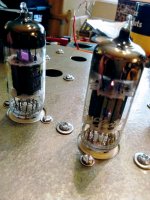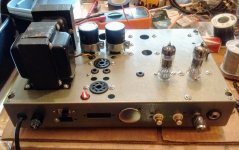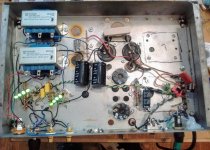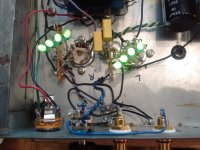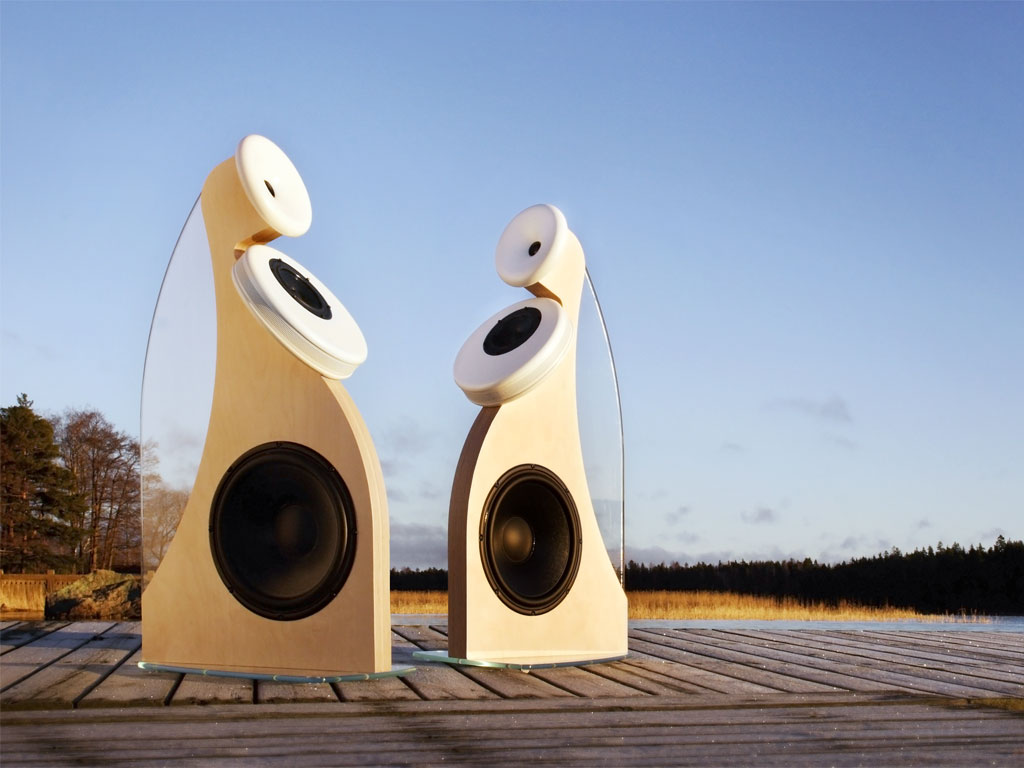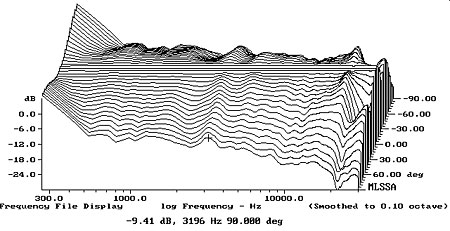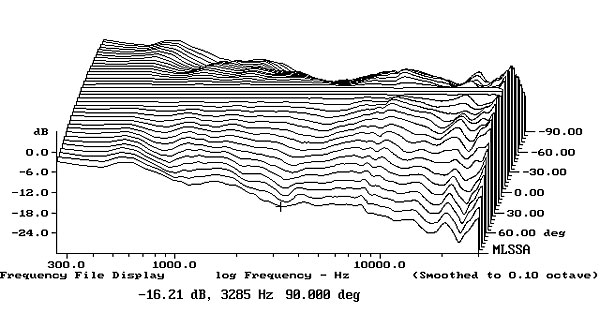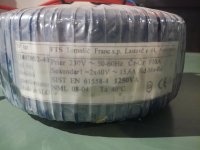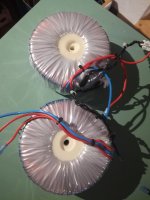I finally (finally!) finished putting together my first self-designed headphone amp. I think it came out pretty well.
This amp is a pure junkbox project. The goal was to make a useful toy out of parts I've collected over the years. The idea was to NOT buy ANY parts, if at all possible. The amp's built in a discarded Heathkit W5M chassis a friend gave me something like 15 years ago. I also wanted to put to work things I've learned from folks here on diyAudio. Thanks to everyone who gave me advice and instruction along the way. (I know the "strain relief" on the AC cord is laughable. I promise I'll do better next time.)
It was pretty funny how many gremlins were tripping me up today. The first time I brought the amp up on the variac it blew its fuse. Turns out there was a faulty rectifier diode. Replaced that and brought the amp up again. This time the fuse held. Now the right channel tube's heater wasn't lighting up. A little jiggling of the pins in the socket and that problem went away. Weird. I checked for a cold solder joint, but all seemed fine. Oh well. Brought it up again. All seemed to be going well so I connected RCA cables to the inputs and gave it the Bzzzzt Test (touch the central pin in each RCA plug in turn, slowly turn up the volume, listen for the bzzzzt from each channel in turn). Hmmm, no sound from the right channel. Oh no... Continuity checked out OK. All resistances OK, including both OPTs. The output jack? Brought it out, disconnected it. Clip-leaded in a new jack and there it was. Would you believe a defective jack? Man, I'm snake-bit!
Finally, all was looking good. I took the amp off the variac, powered it directly from house AC. All good. Time to listen.
I connected the amp to my PC's soundcard, plugged in a pair of beater headphones, gave it a listen.
Four hours later and I'm still listening. This thing sounds really, really good to me. Clean and clear. Not "warm." Lots of impact. Drums go "thwack." Isaac Stern's violin is really nice. Not 'electronic' sounding at all. Bass has real body. I think it goes low enough to be enjoyable. (I was worried about that.) Overall the amp is 'livelier' sounding than my Objective 2 amp. I don't want to go down the rabbit hole of audiophool jargon blather, so I'll just post some pictures of my fuggly build and the schematic of the basic circuit.
In the schematic there's a B+ supply common to both channels, then the DC splits off into an RC filter for each channel of 560R and 330uF (R2 and C4). Later I hope to replace that RC filter with a simple voltage regulator member Elvee basically designed for me (thanks Elvee!). The idea is to have a couple of pretty 0D3 glow tubes standing on top of the chassis. I rigged it up with the passive supply to get it going.
I was worried about hum from AC heaters. I very carefully followed the suggestions in the
"Heater Wiring - The Good the Bad and the Ugly" thread. I'm getting absolutely zero hum of any kind. (I'm so happy about that.) I also followed the suggestions for grounding layout in Merlin Blencouwe's Valve Wizard
Grounding article. That worked perfectly too. (I'm elated about that.) I also referred to Merlin's "Designing High Fidelity Tube Preamps" book a lot, which was especially helpful for power supply stuff.
So it's a success. Gain is about 2X, I think. I haven't measured it yet, as I don't have my signal generator and scope fully accessible right now. I need to get to that.
Finally, I need to figure out whether I need damping resistors across the OPT secondaries for using the amp with 300 ohm headphones. The amp sounds excellent to me into my Fostex T50RP headphones (60 ohm impedance). It also sounds clean and clear into my Sennheiser HD650 headphones (300 ohms), but these supposedly 'dark-sounding' cans sound bright and a little bass-shy from this amp. I'm wondering if that's an artifact of putting a higher than optimal 300 ohm load on the nominal 50 ohm secondary. This weekend I'll have some time to clip in some different values of parallel resistors to see what sounds good to me.
But for now, I'm just happy this thing is working well. Thanks again to the diyAudio community.
--
